Known for his enormous contribution to jazz and electric guitar, Pat Metheny has become a household name over his long and illustrious career. Pat Metheny manages to combine virtuosity with accessibility, resulting in music that is pleasing for two kinds of audiences, hence his popularity.
5 Licks From Two For The Road
While Pat Metheny has elevated the electric guitar in jazz, he has also brought attention to the acoustic guitar and its role in jazz improvisation. One of his most memorable acoustic releases is the duo album he recorded with Charlie Haden, Beyond the Missouri Sky.
On that record, Pat brings his slippery lines and unique articulation to the acoustic guitar on many of the album’s tracks, including the song Two For the Road. In this lesson, you learn and break down 5 licks from Pat’s solo on that tune.
You don’t have to play them on acoustic guitar for them to work in your playing. Taking licks from the acoustic guitar and playing them on electric is a great way to expand your soloing vocabulary and bring a fresh approach to those lines.
Have fun with these licks, learn them in several keys and positions on the guitar, and add them to your next guitar solo. They’ll expand your soloing chops and bring a Metheny vibe to your lines at the same time.
Video
Two for the Road Lick 1
This first lick uses the A natural minor scale (aka the Aeolian mode):
| A Natural Minor Scale | A | B | C | D | E | F | G |
|---|---|---|---|---|---|---|---|
| 1 | 2 | b3 | 4 | 5 | b6 | b7 |
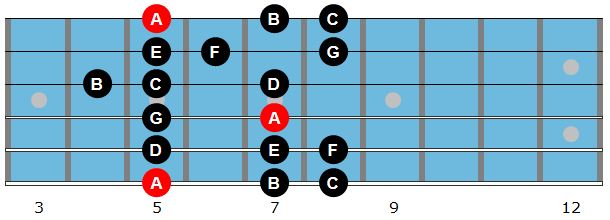
Listen & Play Along
Backing Track

Two for the Road Lick 2
This second lick uses the A natural minor scale as well, combined with an E major triad in the second half of bar 2 and the first half of bar 3.
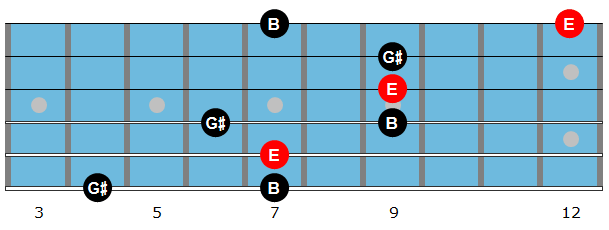
Listen & Play Along
Backing Track

Two for the Road Lick 3
The third lick starts with an E7 arpeggio, combined with chromatic and approach notes.
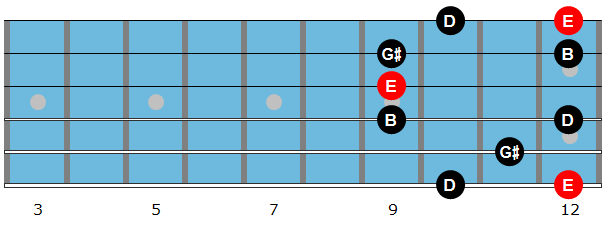
The second bar starts with the A natural minor scale and goes to the A minor blues scale in the second part.
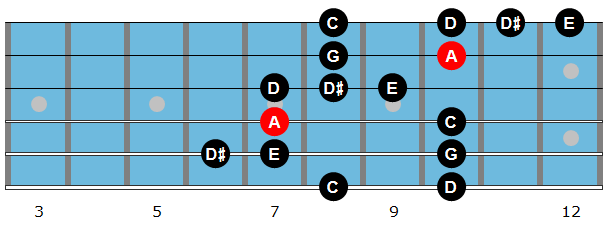
Listen & Play Along
Backing Track
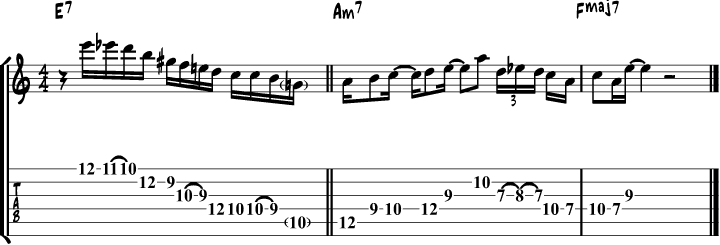
Two for the Road Lick 4
In this outside sounding lick, Pat uses a technique called sidestepping.
He starts with the B major scale (B-C#-D#-E-F#) and moves on to the C Mixolydian scale (G-A-Bb-C-D-E). He then plays a chromatic line and finishes with the C major scale.
Listen & Play Along
Backing Track

Two for the Road Lick 5
In this last lick from Two For The Road, Pat Metheny uses the A minor blues scale.
Listen & Play Along
Backing Track

Pat Metheny – Minor Licks
Minor Lick 1
This typical Pat Metheny lick contains a number of 3rd intervals, both diatonic and chromatic.
Pat is a fan of playing chromatic thirds, both ascending and descending, which you can see at the end of the lick in this example.
If you are looking to get a Metheny vibe into your solos, try taking those last few chromatic 3rds out of this lick and apply them to other musical situations.

Minor Lick 2
One of the elements of Pat’s playing that stands out is his fluid, legato playing, which you can hear in the next example.
Though many of us associate three-note-per-string scales with rock and metal, Pat translates these scale shapes to the jazz idiom as he uses to hammer-ons per string to build a fluid line over a Dm7 chord.

Minor Lick 3
This lick is a minor ii-V-I in C that uses a G triad over G7alt, as well as the melodic minor scale over Cm7.
Sometimes something as simple as a root-triad is the best way to go in your soloing.

Pat Metheny – Major Licks
Major Lick 1
Here you are stepping outside and using non-diatonic triads to build tension over a major 7 chord, in this case, Cmaj7.
Notice how there are some diatonic notes in each triad, and some tension-building notes, which eventually resolve to the 6th, the last note of the line.
Experimenting with non-diatonic triads over maj7 chords is tricky to get right, but it’s something you can work on in order to get that “tension-release” sound into your playing that makes Pat’s soloing so interesting from a melodic standpoint.

Major Lick 2
This phrase uses string crossing to build a semi-legato line that mixes hammers with plucked notes in a cool sounding and effective manner.
This technique can be a bit tricky to get under your fingers at first, so go slow, use a metronome and really nail that string crossing before raising the tempo and getting the whole phrase up to speed.

The post Pat Metheny appeared first on Jazz Guitar Online | Free Jazz Guitar Lessons, Licks, Tips & Tricks..
from Jazz Guitar Online | Free Jazz Guitar Lessons, Licks, Tips & Tricks. https://ift.tt/2J0NZKF
 5 Pat Metheny Licks.pdf
5 Pat Metheny Licks.pdf
No comments:
Post a Comment